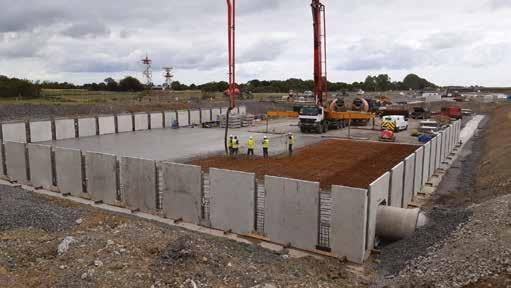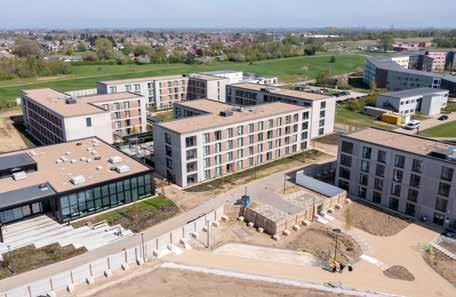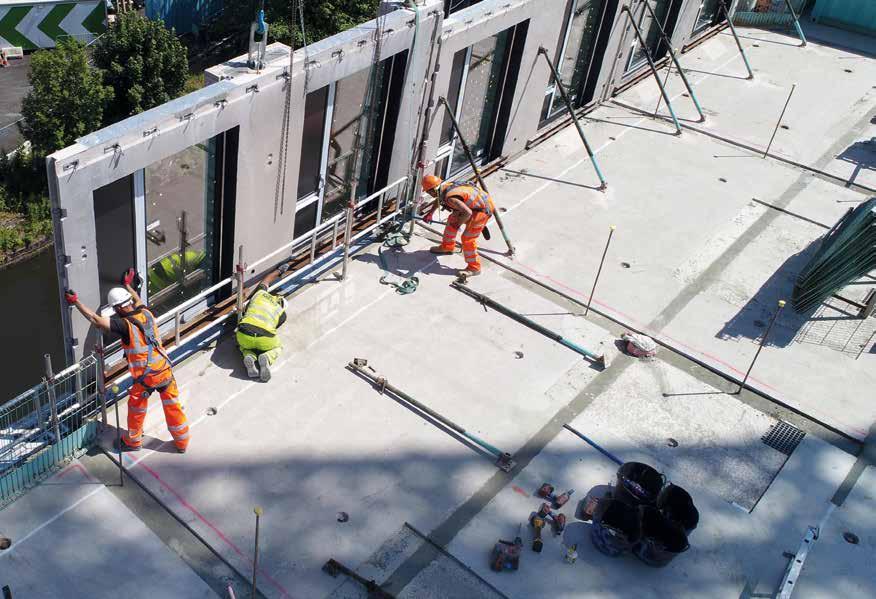
2 minute read
PRECAST CONCRETE DECARBONISATION FOR BETTER BUSINESS
The Circular Cement Value Chain
A circular economy of concrete and cement could produce €110billion in net value and avoid or mitigate two billion tons of CO2 emissions by 2050, according to a new McKinsey & Company report. As the new report spells out, cement and concrete are the ‘linchpins of the built environment’ with its global demand having nearly tripled over the past 20 years. With circular economy principles driving much sustainable thinking, what decarbonisation principles are at stake?
The ‘Circular cement value chain: Sustainable and profitable report’ projects that adoption of circular technologies could also decarbonise 80% of all cement and concrete emissions by 2050. This will be driven by capture, storage and usage of CO2 from cement and concrete production, re-use of energy from waste material and recirculation of materials and minerals across the built environment.
Adoption of circular economy principles is estimated to offset more than half of the losses to the cement industry from rising costs and reduced demand. And adoption of circular technologies could be further accelerated by rising CO2 prices, landfill costs and decarbonization subsidies. The report reveals that recycling and re-using construction materials and minerals alone will add nearly €80billion of annual EBITDA while reusing concrete modules and structures will drive an estimated €24billion of net value by 2050. Regions with high landfill costs and construction and demolition waste will also reap major benefits from the use of alternative fuels from waste material with the global average share of alternative fuels reaching 43% by 2050.
Sebastian Reiter, Partner at McKinsey's Global Energy & Materials adds: “Cement and other industry players should engage in circular business building and use circular technologies to react to evolving financial risks. The total value at risk from rising CO2 prices and landfill costs could reach approximately €210billion by 2050 and this will significantly accelerate uptake of circular technologies. For example, our research shows that technologies utilising CO2 such as curing ready-mix or precast concrete can create positive economic value at carbon prices of approximately €80% of CO2 while using construction waste as aggregates for concrete production avoids landfill costs.”
Central to all future behaviour is increasing customer centricity will likely create new opportunities across the built environment. New business models for all players in the built environment—not only cement and concrete manufacturers—are expected to evolve from actions that facilitate circularity along the value chain as well as actions that deliver the value of circularity to consumers.
For more information visit: www.mckinsey.com
Ibstock and Earth Friendly Concrete form partnership to support ESG ambitions
Ibstock, a UK leading manufacturer of clay and concrete building products, and Earth Friendly Concrete (EFC) have entered into a new partnership to create ultra-low carbon concrete products.
This exciting partnership supports Ibstock’s ambitious ESG targets. Having recently launched its ESG Strategy to 2030, Ibstock is committed to ‘Manufacture Materials for Life’ and improving the environmental performance of its products. Its milestone 2030 target is to achieve 20% of sales turnover revenue from new and sustainable products.
With the built environment accounting for 25% of the UK’s carbon emissions, Ibstock is proactively seeking to develop new solutions with improved environmental performance. EFC is more sustainable than traditional concrete, with around 70% less embodied CO2 saving 250kg of CO2 per cubic metre poured. It is made from a binder consisting of industrial waste products, ground granulated blast furnace slag and pulverised fly ash with no Portland Cement.
The partnership will see EFC’s ultra-low carbon, zero







